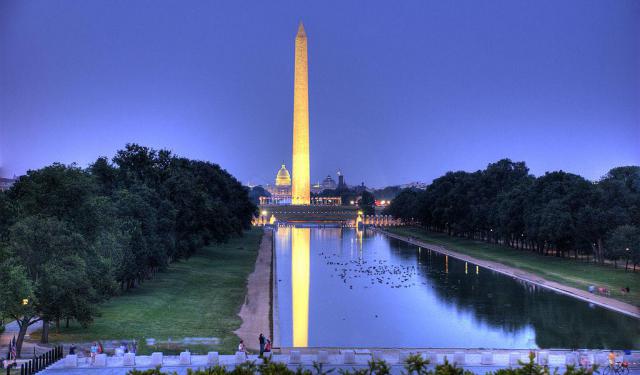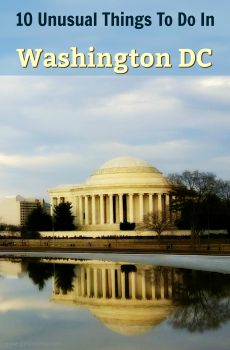
Library of Congress, Washington D.C. (must see)
The Library of Congress was founded in 1800 during President John Adams' administration with the primary purpose of providing Congress with the necessary books for their legislative duties. Thomas Jefferson played a significant role in emphasizing the importance of the library, and in 1802, he signed a law that outlined its structure and permitted the President and Vice-President to borrow books from it. Unfortunately, during the War of 1812, the Library of Congress was destroyed when British troops burned down the Capitol in 1814.
In response to this loss, President Jefferson generously offered his personal collection of 6,487 books to replace those lost in the fire. Congress accepted his offer in 1815, compensating him approximately $24,000 for his library. Regrettably, another fire occurred in 1851, destroying roughly 4,000 books from President Jefferson's donation along with an additional 31,000 volumes. Following some debates about its management, the Smithsonian Institution transferred approximately 40,000 volumes to the Library in 1866.
Subsequently, the Library of Congress underwent substantial expansion, amassing 840,000 volumes by 1897. During this period, there was a growing sentiment that the Library should serve as a national resource. Programs were initiated to make the collection accessible to individuals with physical disabilities. In addition to books, the Library houses an extensive collection of manuscripts, sheet music, maps, sound recordings, and films, making it an extraordinary repository of knowledge.
Today, the Library of Congress boasts the world's largest collection of books and manuscripts. While it is a public resource, only members of Congress, high-ranking officials, and Supreme Court Justices have the privilege to check out books. Nevertheless, anyone is welcome to utilize the books stored in three separate buildings on Capitol Hill in Washington, D.C. These libraries are interconnected by tunnels, streamlining the security process for visitors.
Why You Should Visit:
A world treasure that has one of the most beautiful building interiors in Washington, D.C. and worldwide!
There are permanent exhibits (first printed book – Gutenberg Bible from 1455) as well as temporary ones at any times.
Tip:
Definitely go online beforehand and register for your reader card; then, when you get there, just show your ID and the world of learning is open to you.
Tours are free and about an hour long. While you can see all the areas on the tour on your own, they are explained nicely by the tour guide.
There is a tunnel that connects the LoC and the US Capitol so you can view both without going outside.
If coming from the Capitol Building, you don't have to pass through the security check again (but if planning on visiting the Capitol Building from here, you will need to go through the security check, even if you came from this building before).
In response to this loss, President Jefferson generously offered his personal collection of 6,487 books to replace those lost in the fire. Congress accepted his offer in 1815, compensating him approximately $24,000 for his library. Regrettably, another fire occurred in 1851, destroying roughly 4,000 books from President Jefferson's donation along with an additional 31,000 volumes. Following some debates about its management, the Smithsonian Institution transferred approximately 40,000 volumes to the Library in 1866.
Subsequently, the Library of Congress underwent substantial expansion, amassing 840,000 volumes by 1897. During this period, there was a growing sentiment that the Library should serve as a national resource. Programs were initiated to make the collection accessible to individuals with physical disabilities. In addition to books, the Library houses an extensive collection of manuscripts, sheet music, maps, sound recordings, and films, making it an extraordinary repository of knowledge.
Today, the Library of Congress boasts the world's largest collection of books and manuscripts. While it is a public resource, only members of Congress, high-ranking officials, and Supreme Court Justices have the privilege to check out books. Nevertheless, anyone is welcome to utilize the books stored in three separate buildings on Capitol Hill in Washington, D.C. These libraries are interconnected by tunnels, streamlining the security process for visitors.
Why You Should Visit:
A world treasure that has one of the most beautiful building interiors in Washington, D.C. and worldwide!
There are permanent exhibits (first printed book – Gutenberg Bible from 1455) as well as temporary ones at any times.
Tip:
Definitely go online beforehand and register for your reader card; then, when you get there, just show your ID and the world of learning is open to you.
Tours are free and about an hour long. While you can see all the areas on the tour on your own, they are explained nicely by the tour guide.
There is a tunnel that connects the LoC and the US Capitol so you can view both without going outside.
If coming from the Capitol Building, you don't have to pass through the security check again (but if planning on visiting the Capitol Building from here, you will need to go through the security check, even if you came from this building before).
Want to visit this sight? Check out these Self-Guided Walking Tours in Washington D.C.. Alternatively, you can download the mobile app "GPSmyCity: Walks in 1K+ Cities" from Apple App Store or Google Play Store. The app turns your mobile device to a personal tour guide and it works offline, so no data plan is needed when traveling abroad.
Library of Congress on Map
Sight Name: Library of Congress
Sight Location: Washington D.C., USA (See walking tours in Washington D.C.)
Sight Type: Attraction/Landmark
Guide(s) Containing This Sight:
Sight Location: Washington D.C., USA (See walking tours in Washington D.C.)
Sight Type: Attraction/Landmark
Guide(s) Containing This Sight:
Walking Tours in Washington D.C., USA
Create Your Own Walk in Washington D.C.
Creating your own self-guided walk in Washington D.C. is easy and fun. Choose the city attractions that you want to see and a walk route map will be created just for you. You can even set your hotel as the start point of the walk.
Georgetown University Walking Tour
Georgetown University, established in 1789, is America's oldest Catholic and Jesuit institution. Spanning four campuses in Washington, DC, its main undergraduate campus in Georgetown features fifty-four buildings across 104 acres.
With its Gothic and Georgian architecture, serene green spaces, and Jesuit traditions, the university promotes academic excellence and global engagement. For... view more
Tour Duration: 2 Hour(s)
Travel Distance: 2.1 Km or 1.3 Miles
With its Gothic and Georgian architecture, serene green spaces, and Jesuit traditions, the university promotes academic excellence and global engagement. For... view more
Tour Duration: 2 Hour(s)
Travel Distance: 2.1 Km or 1.3 Miles
Washington D.C. Introduction Walking Tour
Washington, D.C., formally the District of Columbia or simply The District, is the capital of the United States and, in many senses, America’s front yard. After the American Revolution, the need for the newly independent nation's federal government to have authority over a capital city and not rely on any state for its maintenance and safety, came in the wake of the Pennsylvania Mutiny of... view more
Tour Duration: 2 Hour(s)
Travel Distance: 5.2 Km or 3.2 Miles
Tour Duration: 2 Hour(s)
Travel Distance: 5.2 Km or 3.2 Miles
Federal Buildings Walking Tour
The capital of the United States is home to several notable federal buildings that hold significant historical, architectural, and governmental value.
Among the stately “emblems of authority” in Washington D.C. perhaps the most prominent is the official residence and workplace of the President of the United States – The White House. This resplendent mansion at 1600 Pennsylvania Avenue... view more
Tour Duration: 2 Hour(s)
Travel Distance: 4.9 Km or 3 Miles
Among the stately “emblems of authority” in Washington D.C. perhaps the most prominent is the official residence and workplace of the President of the United States – The White House. This resplendent mansion at 1600 Pennsylvania Avenue... view more
Tour Duration: 2 Hour(s)
Travel Distance: 4.9 Km or 3 Miles
DC Monuments and Memorials Walking Tour
"In the end, it's not the years in your life that count. It's the life in your years," goes the famous quote by Abraham Lincoln.
Indeed, those remembered in Washington, D.C. – the renowned statesmen, politicians, fallen soldiers, and other distinguished persons – had their years filled with life to the brim. What they left behind is a great legacy manifested in historic... view more
Tour Duration: 2 Hour(s)
Travel Distance: 3.6 Km or 2.2 Miles
Indeed, those remembered in Washington, D.C. – the renowned statesmen, politicians, fallen soldiers, and other distinguished persons – had their years filled with life to the brim. What they left behind is a great legacy manifested in historic... view more
Tour Duration: 2 Hour(s)
Travel Distance: 3.6 Km or 2.2 Miles
Arlington National Cemetery Tour
"The legacy of heroes is the memory of a great name and the inheritance of a great example," a distinguished politician of the 19th century said once.
The historic military necropolis – the Arlington National Cemetery in Arlington, Virginia – is the final resting place for many of America's heroes, whose willingness to sacrifice for their country has earned them the... view more
Tour Duration: 2 Hour(s)
Travel Distance: 4.1 Km or 2.5 Miles
The historic military necropolis – the Arlington National Cemetery in Arlington, Virginia – is the final resting place for many of America's heroes, whose willingness to sacrifice for their country has earned them the... view more
Tour Duration: 2 Hour(s)
Travel Distance: 4.1 Km or 2.5 Miles
Georgetown Walking Tour
Georgetown is a historic neighborhood situated in the northwest quadrant of Washington, DC. Despite its proximity to downtown, this former port area has preserved much of its distinct character. In Georgetown, "old-world charm meets modern allure," they say. Those poetically inclined tend to compare it to "a tapestry of cobblestone dreams and timeless grace."
The... view more
Tour Duration: 2 Hour(s)
Travel Distance: 3.9 Km or 2.4 Miles
The... view more
Tour Duration: 2 Hour(s)
Travel Distance: 3.9 Km or 2.4 Miles
Useful Travel Guides for Planning Your Trip
10 Unusual Things to Do in Washington DC
You might be inclined to think that the capital of the United States consists solely of museums and monuments, but that couldn’t be further from the truth. As a local, I’ve found that there are so many more things to do in this city than just the main tourist highlights. Read on to learn 10 of...
Traveler's Guide to Washington DC: 16 Souvenirs to Bring Home
The capital of the United States is an attraction in its own right and many things that have originated here or in the nearby areas are of great cultural and historic significance. To decide which of them can make for an ideal souvenir for you to bring home, check out the proposed list of local...
10 Chocolate Destinations in Washington D.C.
Let’s be honest, you hear the words "Washington, D.C." and you think politics, history, museums, etc. You can’t take five steps in the city without being surrounded by history. As important as all that culture is, it’s also a bit overwhelming. Make it fun by exploring Washington,...









